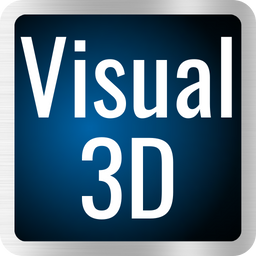Visual3D Overview
Visual3D is the #1 rated research software product for 3D Motion Capture data analysis and modelling. It is used by researchers and other professionals world-wide for assessments, rehabilitation, neuroscience, engineering, robotics, sports (performance, injury prevention, equipment manufacture), orthopedics, prosthetics, animal studies, disability assessments, and more…
Visual3D is the one product that will let you take full advantage of your motion capture system's capabilities by removing the limitations of predetermined marker sets, analysis rules, or other restrictions. It removes the need for custom software development, or trying to integrate and maintain custom applications using third party products like Matlab.
Visual3D exceeds the functionality of the software developed by motion capture systems manufacturers, and provides a single commercially supported platform for 3D motion capture data management and analysis – often at a considerably lower price.
Because Visual3D is hardware independent, it enables labs around the world to collaborate and share data and analysis results in a consistent manner, regardless of the motion capture system used. This hardware independence also enables a lab to modify, enhance, update, or even replace underlying motion capture systems without affecting any existing data or studies in progress.
Visual3D is all about managing your motion capture data, and key concepts are documented throughout this wiki. Processing motion capture data takes several steps, each of which is important. They are: Data collection, Modelling, Analysis, and Reporting. See the Visual3D documentation.
Data Collection: Visual3D will let you use your motion capture system more effectively because the analysis techniques will lead you to optimal marker locations and definitions. See: The Visual3D Philosophy
Modelling: Motion capture data is just a big collection of signal inputs (usually in C3D file format). It has to be applied to a biomechanical model of a subject for it to make sense, and for analysis to be possible. See: key concepts and the overview and pose estimation and mapping motion to models
Analysis: Visual3D includes the math libraries needed to determine joint angles, powers, moments, forces, velocities, accelerations, custom pose estimations, filtering, signal processing, and much more. Citations exist for all the routines and approaches - there are no proprietary calculations in Visual3D so that methodologies can be supported. Create custom math expressions and automate your analysis via the pipeline tool for total control.
Reporting: Visual3D has a full graphing and reporting tool built in. Data can also be exported, and future versions support the OpenDoc format to integrate with MS Word or OpenOffice. In addition to the Visual3D documentation see: the report creation tutorial.
Releases: Visual3D Version Release Notes - click here.
Visual3D Hardware Requirements: Visual3D runs on Windows Vista and above (Vista/Win7/Win8/Win10/Win11). It has no specific minimal hardware requirements. It runs on 32 and 64 bit systems. But naturally, more powerful and advanced hardware is best. We recommend a 64-bit processor and having a minimum 4GB or more of memory (more is better).
Visual3D also runs on a Mac under Parallels or VMWare (or dual boot to Windows with Bootcamp). Sorry, there is no iPad, MAC, or Linux version.
Here is a small list of some of the features that Visual3D provides:
Comprehensive Research Platform
- Motion capture hardware-independent solution, with real-time interfaces for many systems
- Supports synchronized Analog data (force plates, EMG, EEG, load cells, gyros, MEMS, etc.)
- Force Structures for instrumented stairs, treadmills, ramps, and multi-force plate configurations
- Data management for models, movement trials, and indexing
- Automation support via pipeline (scripting, meta-commands, and script controller)
- Template support for models and reports with template appending capabilities
- Scientific literature citations for all internal calculations
- Imports data from C3D, ASCII, and older mocap formats
- Export .mot files to OpenSim for forward modeling
- Results stored as single data file with original and processed signals, model, and reports
- Free viewer available for download that allows anyone to view (not edit) the data file
Advanced Modeling
- Automatic model building for Markerless Systems
- Advanced Modeling with no marker set limitations and support for classical gait and 6DOF
- Allows for custom, customer-defined marker sets
- Graphical approach for creating models
- Unlimited kinematic chains allow child to parent segments of 1 to 6 degrees of freedom joints
- Virtual markers (landmarks), segments, and labs to simplify, improve, and enhance analysis
- Digitizing pointer support for creating virtual markers
- Functional joint center calculations
- Linked-model based calculations for joint angles, powers, moments, etc.
- Virtual labs and VRML backgrounds supported
Signal Processing and Analysis
- Kinematics and Inverse Dynamics (Kinetics)
- Real-time analysis and biofeedback functionality
- Inverse Kinematics/Global Optimization (Upper body IK
- Complex Signal Processing, Filtering, and C3D import/export (includes export to Polygon)
- Custom metrics, mathematical expressions and calculations (and integrates with Matlab)
- Synchronized video support
Integrated Reporting
- Integrated Report Generator
- Historical audit trail tracking of all changes to raw data
- Exporting graphs and reports in various formats (.jpg, .bmp, .avi, .svg, .png, etc.)
- Consolidated reporting of similar/tagged data
- Support for normative data collection across subjects

